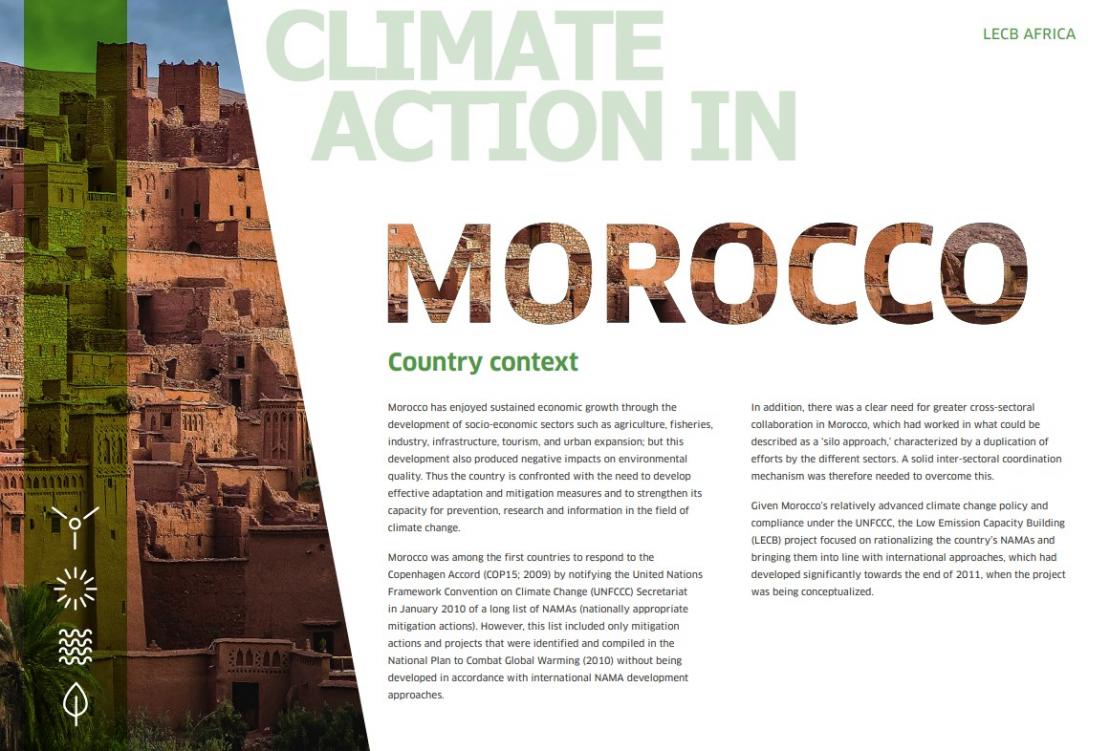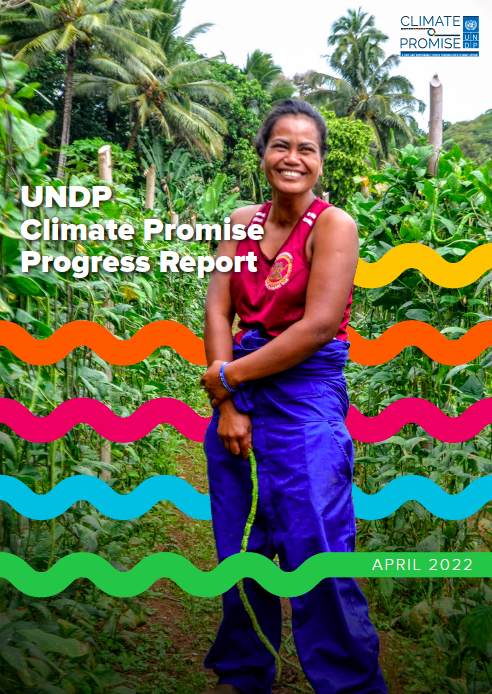LECB Programme Impact and Results: Morocco

Morocco has enjoyed sustained economic growth through the development of socio-economic sectors such as agriculture, fisheries, industry, infrastructure, tourism, and urban expansion; but this development also produced negative impacts on environmental quality. Thus the country is confronted with the need to develop effective adaptation and mitigation measures and to strengthen its capacity for prevention, research and information in the field of climate change.
Morocco was among the first countries to respond to the Copenhagen Accord (COP15; 2009) by notifying the United Nations Framework Convention on Climate Change (UNFCCC) Secretariat in January 2010 of a long list of NAMAs (nationally appropriate mitigation actions). However, this list included only mitigation actions and projects that were identified and compiled in the National Plan to Combat Global Warming (2010) without being developed in accordance with international NAMA development approaches.
In addition, there was a clear need for greater cross-sectoral collaboration in Morocco, which had worked in what could be described as a ‘silo approach,’ characterized by a duplication of efforts by the different sectors. A solid inter-sectoral coordination mechanism was therefore needed to overcome this. Given Morocco’s relatively advanced climate change policy and compliance under the UNFCCC, the LECB project focused on rationalizing the country’s NAMAs and bringing them into line with international approaches, which had developed significantly towards the end of 2011, when the project was being conceptualized.


